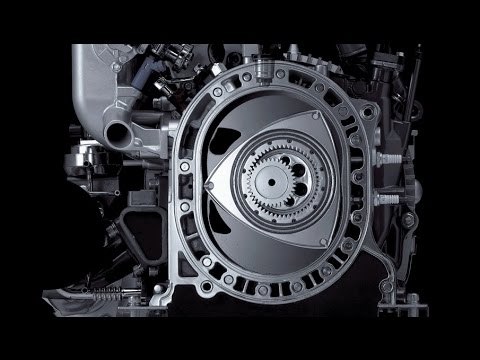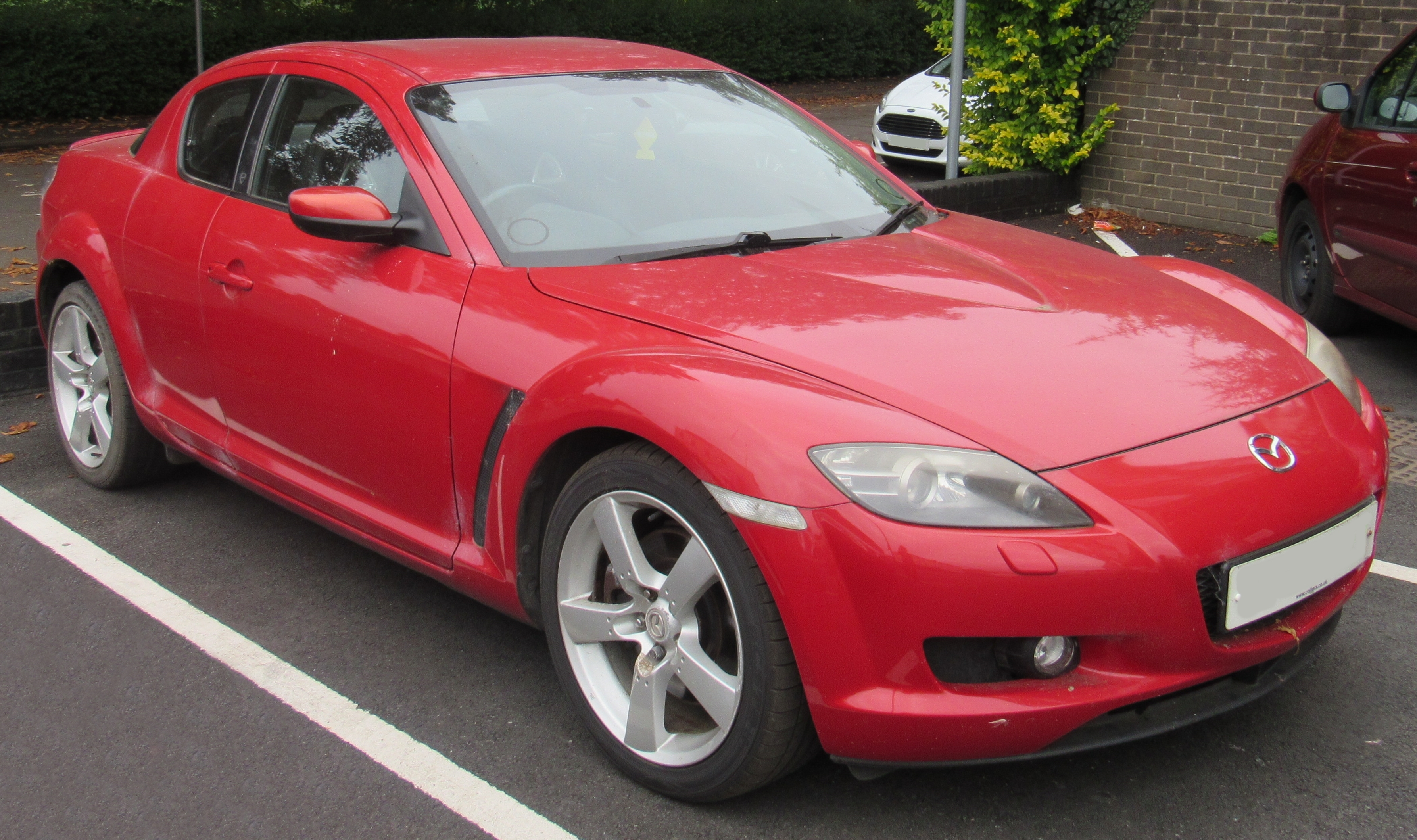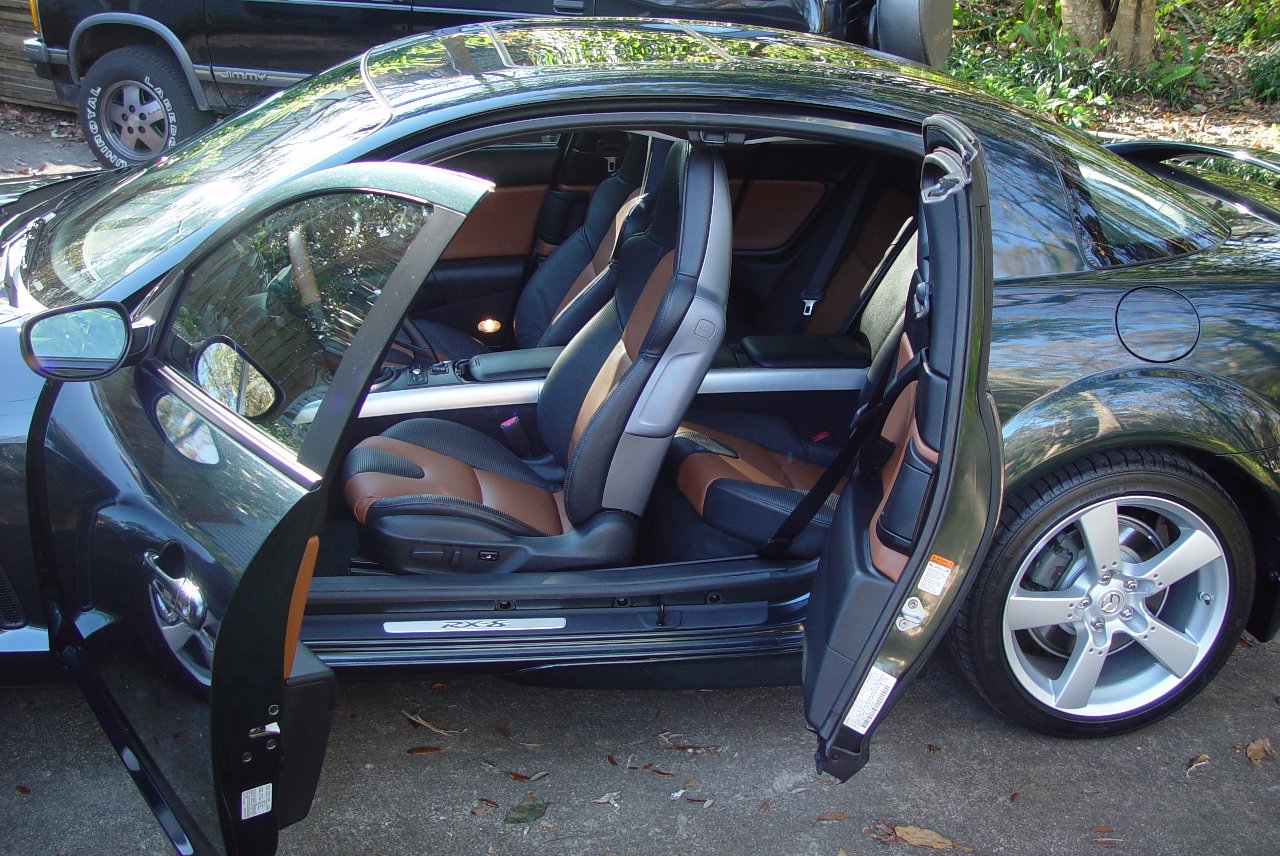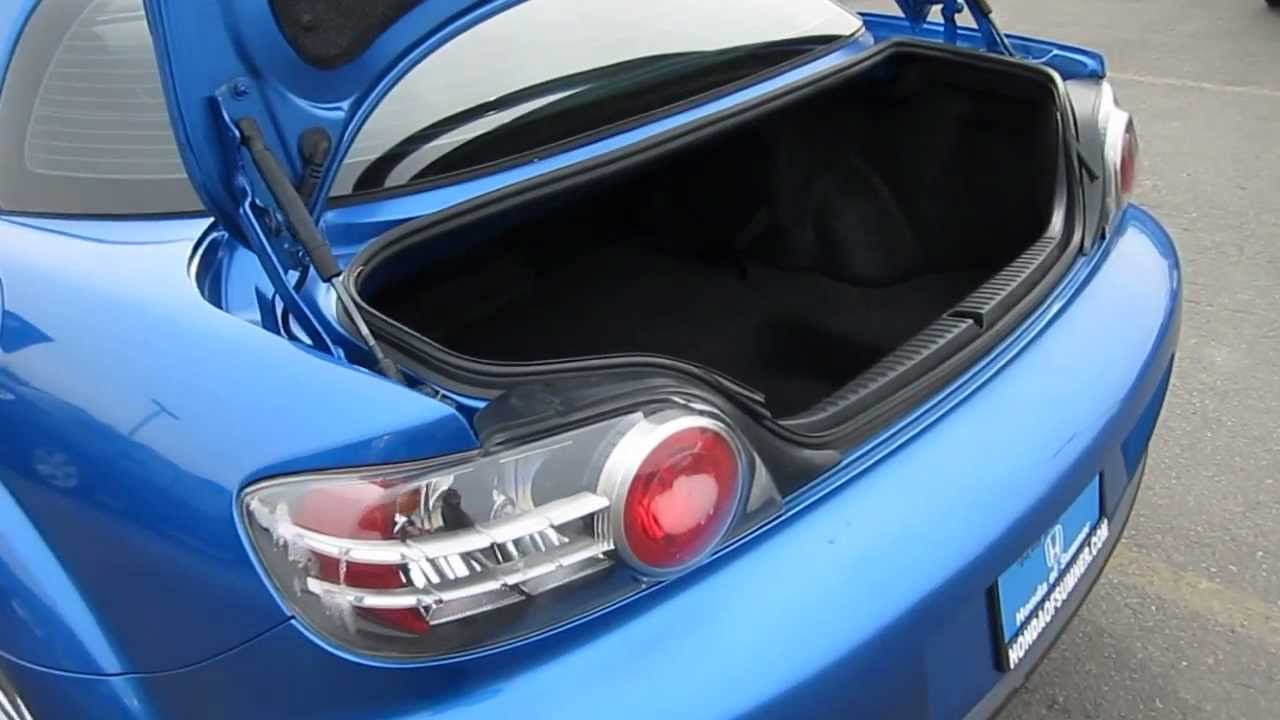mmcartalk
Expert
- Messages
- 4,155
- Reactions
- 2,675
MM Retro-Write-Up: 2003-2012 Mazda RX-8









IN A NUTSHELL: Not as much of a pure sports car as the RX-7, but more comfortable and practical.
In the 1990s, the escalating prices and insurance premiums for upmarket Japanese sports cars drove them out of the American market. The Toyota Supra, Mazda RX-7, Nissan 300ZX, and Dodge Stealth/Mitsubishi 3000GT, particularly in their top-line and/or Turbo versions, were well-loved by the auto-enthusiast-magazines (who usually don’t actually pay for the samples they keep and test, as they are temporarily lent to the magazines by their manufacturers), and set the standards for non-exotic sports-car performance of that era. But, the average John Q. Public, even if a sports-car-enthusiast, found these machines more and more difficult to acquire and insure…….the sliding value of the dollar against the Japanese Yen (which reached a new low in 1996) didn’t help, either. And, even with new safety devices starting to proliferate at that time (air-bags, all-wheel-drive, anti-lock brakes, vehicle-stability systems, traction control, etc…..), and the 3000GT VR-4’s 4-wheel-steering system, morons and immature drivers were still finding ways to crack these cars up and sock it to the insurance companies.
(Indeed, one of them happened when me and a close friend of mine were actually almost run over one afternoon, after work, as we were walking on the side of the road on the sidewalk…a young man, who IMO was an idiot, was trying to show off for his friend, in a new 300ZX that belonged to his Dad, whacked the front end at high speed over a bump on a long downhill ramp to a country club, spun it out, and whacked the curb just a couple of feet from where we were walking. We went up to see if we could help, if anyone was hurt, but the driver was in a state of shock and hollering curse-words at himself. Don’t ask me to describe what happened to the car…it was probably totalled, even for a brand-new sports-car with a high residual value).
So much for moron-driver stories. Anyhow, for these and other reasons, these vehicles simply got too expensive for most people to buy and insure, and were pulled from the American market. What’s more, they were usually only good for two people at a time when minivans and SUVs were taking over much of the market. I suggested to the company-reps, at the D.C. Auto Show, that they simply discontent the vehicles and lower the price, but they chose instead to just drop them, period, from the American market. By the end of the 1990s, they were gone.
A few, however, were to return several years later, not in a cheaper, decontented form as I had suggested to reps, but as all-new, redesigned, totally different vehicles…the Nissan 350Z and Mazda RX-8. Unlike the 300ZX which had proceeded it, the new 350Z was somewhat of a a retro design, with the traditional three-circle gauge-cluster in the center-dash and Z-style roofline. Unfortunately, it also included a defective rear-suspension that wore out tires prematurely….Nissan replaced a lot of tires (which are usually non-warranty items for a manufacturer) under warranty
The RX-8 was the opposite….it expanded upon the old two-seater RX-7 by adding a small package-shelf rear seat, two small forward-opening half-rear doors (which probably took some strength out of the body structure), unique interior trim with rotary-engine-symbols throughout the cabin, and a newer, less-powerful Renesis Rotary engine that was supposed to incorporate the latest updates in rotary-engine durability….a traditional weak point.
I won’t go into all the details again, here, of the quirks of a rotary engine and how it operates…I did that in my last write-up on the Mazda RX-7. The Renesis Rotary in the RX-8, however, was supposed to address some of those issues, and, to some extent, it did, even though, of course, it lacked the power of the RX-7’s High-Output Twin-Turbo rotary. Oil-consumption became somewhat less of an issue, although it was still wise to carry a extra can or bottle of Rotary-Approved engine-oil with you in the trunk.
Outside, the RX-8, due to the extended roofline extra rear half-doors (which could only be opened after the two front doors were first opened, to keep the wind from tearing them off), took on more of the appearance of a low-slung sports-coupe than a classic sports-car like the RX-7. But don’t kid yourself…..this was not a true four-seater, and, like other vehicles of this type, the rear “seat” was more of a simple package shelf, or a place for small children or pets. But it still included an extra measure of practicality inside over a tighter and more cramped two-seater.
Inside the cabin, perhaps to emphasize the all-new Genesis Rotary-engine under the hood, the styling theme was vastly different from the former RX-7, and included oval/ circular, and Rotary-Engine themes and symbols on the seats, hardware, and numerous other places throughout the cabin. The RX-7 was generally all-business inside, while the RX-8 emphasized a little more civility in driver/passenger comfort, materials, and trim.
On the road, as I remember it from test-drives, there were two big differences between the RX-7 and RX-8. The first was the structure of the vehicle itself. The 3rd-Generation RX-7, as I stated in my earlier write-up, was designed for maximum weight-savings…..almost like a Colin Chapman/Lotus product. It showed, in a bumpy ride, ultra-lightweight chassis-components that were easily bent or damaged over sharp bumps, and due to a noted lack of insulation, a level of road noise/wind-noise and tire-roar that I found not only annoying but something I could never live with as a Daily-Driver, particularly over concrete or grant-asphalt surfaces. Of course, that light weight, together with a virtually perfect 50/50 front/rear weight-distribution, did produce superlative handling/steering characteristics…some of the best in the world at that time for a non-exotic production sports-car. The RX-8, in comparison, felt substantially more solid in its structure, which, IMO, also helped make it quieter inside with more and better sound-insulation, and the chassis-components rested damage better than those on the RX-7. It probably wasn’t quite the same as the shorter/lighter RX-7 on the track (I didn’t sample either car on a track)…but, on the street, it had excellent handling, super-quick steering response for virtually anything the driver would encounter in normal driving, and a crisp-shifting 6-speed manual transmission and clutch in the Mazda tradition. IMO, the slight loss handling on the RX-8 was easily worth the better comfort, stronger structure, more practicality, and overall greater civility.
The second major difference, of course, was under the hood, where the non-turbo Renesis engine clearly lacked the power of the RX-7’s twin turbos. There was a decent amount of torque once RPMs increased…..and Rotary engines, because of their smoothness and simplicity of their operation, can reach near-motorcycle RPMs safely. But the lack of torque at low RPMs was almost slug-like, even in the lower gears, although it was probably better for engine durability than the twin turbos on the RX-7 and the added stress they put on the engine. Both the RX-7 and RX-8, being quite low-slung, were not the easiest cars for a big guy my size to shoehorn in and out of, and both were notably more cramped inside than even a small sedan, although, once again, the RX-8’s greater flexibility with the small rear seat wins out.
Mid-cycle improvements/updates were made for the 2008 model year, and Mazda, throughout the RX-8’s lifespan, did several Special-Edition versions, including a MazdaSpeed version for the Japanese market that was not sold in the U.S. However, it was never very profitable for Mazda, and even the Renesis Rotary engine showed limitations in how much it could achieve the new fuel-mileage and emission standards that were on the way. Sadly, the RX-8 was removed from the European market in 2010, and from other markets in 2012. With it went the last rotary-engined vehicle in production….and with most of the emphasis on today’s vehicles being on hybrids, battery/electric, and hydrogen-fuel-cells, we are not likely to see any more of them.
And, as Always, Happy Vehicle-Memories.

MM
__________________

DRIVING IS BELIEVING










IN A NUTSHELL: Not as much of a pure sports car as the RX-7, but more comfortable and practical.
In the 1990s, the escalating prices and insurance premiums for upmarket Japanese sports cars drove them out of the American market. The Toyota Supra, Mazda RX-7, Nissan 300ZX, and Dodge Stealth/Mitsubishi 3000GT, particularly in their top-line and/or Turbo versions, were well-loved by the auto-enthusiast-magazines (who usually don’t actually pay for the samples they keep and test, as they are temporarily lent to the magazines by their manufacturers), and set the standards for non-exotic sports-car performance of that era. But, the average John Q. Public, even if a sports-car-enthusiast, found these machines more and more difficult to acquire and insure…….the sliding value of the dollar against the Japanese Yen (which reached a new low in 1996) didn’t help, either. And, even with new safety devices starting to proliferate at that time (air-bags, all-wheel-drive, anti-lock brakes, vehicle-stability systems, traction control, etc…..), and the 3000GT VR-4’s 4-wheel-steering system, morons and immature drivers were still finding ways to crack these cars up and sock it to the insurance companies.
(Indeed, one of them happened when me and a close friend of mine were actually almost run over one afternoon, after work, as we were walking on the side of the road on the sidewalk…a young man, who IMO was an idiot, was trying to show off for his friend, in a new 300ZX that belonged to his Dad, whacked the front end at high speed over a bump on a long downhill ramp to a country club, spun it out, and whacked the curb just a couple of feet from where we were walking. We went up to see if we could help, if anyone was hurt, but the driver was in a state of shock and hollering curse-words at himself. Don’t ask me to describe what happened to the car…it was probably totalled, even for a brand-new sports-car with a high residual value).
So much for moron-driver stories. Anyhow, for these and other reasons, these vehicles simply got too expensive for most people to buy and insure, and were pulled from the American market. What’s more, they were usually only good for two people at a time when minivans and SUVs were taking over much of the market. I suggested to the company-reps, at the D.C. Auto Show, that they simply discontent the vehicles and lower the price, but they chose instead to just drop them, period, from the American market. By the end of the 1990s, they were gone.
A few, however, were to return several years later, not in a cheaper, decontented form as I had suggested to reps, but as all-new, redesigned, totally different vehicles…the Nissan 350Z and Mazda RX-8. Unlike the 300ZX which had proceeded it, the new 350Z was somewhat of a a retro design, with the traditional three-circle gauge-cluster in the center-dash and Z-style roofline. Unfortunately, it also included a defective rear-suspension that wore out tires prematurely….Nissan replaced a lot of tires (which are usually non-warranty items for a manufacturer) under warranty
The RX-8 was the opposite….it expanded upon the old two-seater RX-7 by adding a small package-shelf rear seat, two small forward-opening half-rear doors (which probably took some strength out of the body structure), unique interior trim with rotary-engine-symbols throughout the cabin, and a newer, less-powerful Renesis Rotary engine that was supposed to incorporate the latest updates in rotary-engine durability….a traditional weak point.
I won’t go into all the details again, here, of the quirks of a rotary engine and how it operates…I did that in my last write-up on the Mazda RX-7. The Renesis Rotary in the RX-8, however, was supposed to address some of those issues, and, to some extent, it did, even though, of course, it lacked the power of the RX-7’s High-Output Twin-Turbo rotary. Oil-consumption became somewhat less of an issue, although it was still wise to carry a extra can or bottle of Rotary-Approved engine-oil with you in the trunk.
Outside, the RX-8, due to the extended roofline extra rear half-doors (which could only be opened after the two front doors were first opened, to keep the wind from tearing them off), took on more of the appearance of a low-slung sports-coupe than a classic sports-car like the RX-7. But don’t kid yourself…..this was not a true four-seater, and, like other vehicles of this type, the rear “seat” was more of a simple package shelf, or a place for small children or pets. But it still included an extra measure of practicality inside over a tighter and more cramped two-seater.
Inside the cabin, perhaps to emphasize the all-new Genesis Rotary-engine under the hood, the styling theme was vastly different from the former RX-7, and included oval/ circular, and Rotary-Engine themes and symbols on the seats, hardware, and numerous other places throughout the cabin. The RX-7 was generally all-business inside, while the RX-8 emphasized a little more civility in driver/passenger comfort, materials, and trim.
On the road, as I remember it from test-drives, there were two big differences between the RX-7 and RX-8. The first was the structure of the vehicle itself. The 3rd-Generation RX-7, as I stated in my earlier write-up, was designed for maximum weight-savings…..almost like a Colin Chapman/Lotus product. It showed, in a bumpy ride, ultra-lightweight chassis-components that were easily bent or damaged over sharp bumps, and due to a noted lack of insulation, a level of road noise/wind-noise and tire-roar that I found not only annoying but something I could never live with as a Daily-Driver, particularly over concrete or grant-asphalt surfaces. Of course, that light weight, together with a virtually perfect 50/50 front/rear weight-distribution, did produce superlative handling/steering characteristics…some of the best in the world at that time for a non-exotic production sports-car. The RX-8, in comparison, felt substantially more solid in its structure, which, IMO, also helped make it quieter inside with more and better sound-insulation, and the chassis-components rested damage better than those on the RX-7. It probably wasn’t quite the same as the shorter/lighter RX-7 on the track (I didn’t sample either car on a track)…but, on the street, it had excellent handling, super-quick steering response for virtually anything the driver would encounter in normal driving, and a crisp-shifting 6-speed manual transmission and clutch in the Mazda tradition. IMO, the slight loss handling on the RX-8 was easily worth the better comfort, stronger structure, more practicality, and overall greater civility.
The second major difference, of course, was under the hood, where the non-turbo Renesis engine clearly lacked the power of the RX-7’s twin turbos. There was a decent amount of torque once RPMs increased…..and Rotary engines, because of their smoothness and simplicity of their operation, can reach near-motorcycle RPMs safely. But the lack of torque at low RPMs was almost slug-like, even in the lower gears, although it was probably better for engine durability than the twin turbos on the RX-7 and the added stress they put on the engine. Both the RX-7 and RX-8, being quite low-slung, were not the easiest cars for a big guy my size to shoehorn in and out of, and both were notably more cramped inside than even a small sedan, although, once again, the RX-8’s greater flexibility with the small rear seat wins out.
Mid-cycle improvements/updates were made for the 2008 model year, and Mazda, throughout the RX-8’s lifespan, did several Special-Edition versions, including a MazdaSpeed version for the Japanese market that was not sold in the U.S. However, it was never very profitable for Mazda, and even the Renesis Rotary engine showed limitations in how much it could achieve the new fuel-mileage and emission standards that were on the way. Sadly, the RX-8 was removed from the European market in 2010, and from other markets in 2012. With it went the last rotary-engined vehicle in production….and with most of the emphasis on today’s vehicles being on hybrids, battery/electric, and hydrogen-fuel-cells, we are not likely to see any more of them.
And, as Always, Happy Vehicle-Memories.

MM
__________________

DRIVING IS BELIEVING

